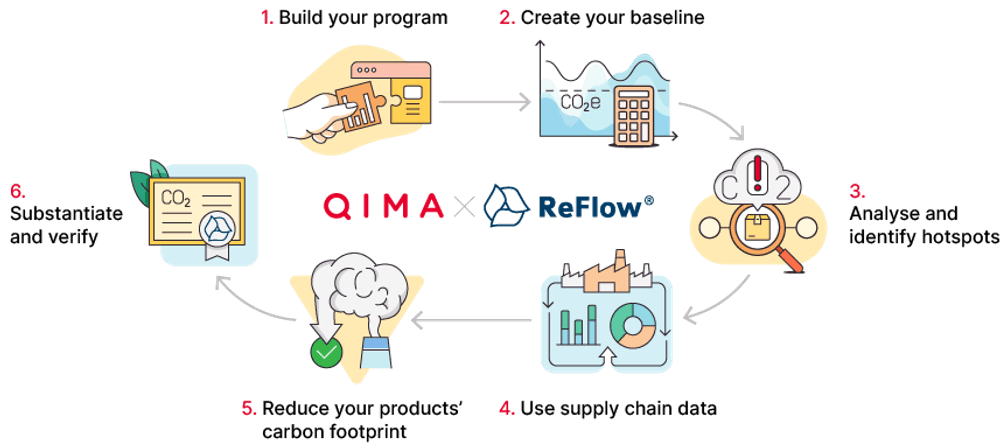Calculating and reducing your carbon footprint
Reducing carbon emissions is crucial in the fight against climate change. Greenhouse gas emissions are divided into three categories – Scope 1, Scope 2 and Scope 3. Many companies have started to calculate their scope 1 & 2 emissions and may also have Net-Zero targets. However, it is also necessary to calculate and reduce scope 3 emissions, which are linked to your supply chain and products. Scope 3 emissions make up the majority (>70%) of a company’s carbon footprint.
Calculating and analyzing the full life cycle carbon footprint of a product can be complex, requiring steps such as supply chain mapping, data collection and calculation, product traceability, onsite verification and data assurance. Additionally, increasing legislation and market expectations require companies to substantiate their reported figures and communicated claims with science-based calculations.
Scope 3 emissions are tied to activities outside the direct control of the organization, tackling them requires collaboration and engagement with suppliers, customers, and other stakeholders. Including scope 3 emissions in Net-Zero targets makes targets more comprehensive and effective and also promotes a collaborative, system-wide approach to carbon reduction that is necessary to tackle global warming.
Learn more about scope 3 emissions from the GHG Protocol here
Start Measuring Your Value Chain Emissions
Effortlessly pinpoint high-intensity carbon emission products within your value chain using the QIMA Estimate Carbon Calculator, available through your online account:

User-Friendly Interface: Simply input your product types, quantities, and primary materials along with their associated weights.
Quick Results: Receive the estimated carbon footprint promptly via email, with detailed information included in your audit report.
Wide Applicability: Suitable for a diverse range of consumer products.
Learn more about our Estimate Carbon Calculator by watching our latest webinar
Need more information?
By contacting QIMA you agree to our privacy policy and terms and conditions.
How does it work?

Together with ReFlow we have created a step-by-step solution for you to calculate, analyze, prioritize, verify and reduce your product carbon footprint.
By leveraging ReFlow’s LCA expertise and powerful platform with QIMA’s supply chain sustainability expertise and global presence, we can support you in every step of the way.
Build your program
We create tailored programs that deliver results based on your needs. Leverage our platforms, expertise, and global presence to effectively onboard and train your internal and external stakeholders throughout the entire process.
Create your baseline
We help you gather the data needed to do first calculations and create your baseline.
Analyze and identify hotspots From your first calculations, we help you to identify hotspots, compare products, suppliers and materials and define next steps.
Use supply chain data
Increase your data sets and improve data accuracy by involving your supply chain. Map your supply chain, gather and verify relevant data needed to run updated calculations.
Reduce your products’ carbon footprint
Run scenarios based on sourcing routes or sustainability initiatives, such as reuse, recycle or repurpose. Work with your suppliers to improve on their environmental practices.
Substantiate and verify
Access third party validation of your calculations in a Climate Assessment Report. Increase your assessment score by using primary verified supply chain data.
Contact us to discover how we can help your business track and reduce your product's carbon footprint.
The QIMA Benefits
Optimize your R&D for lower carbon intensive products
Ensure substantiation to back your green claims
Build credible consumer engagement
Create auditable data sets for regulatory and reporting requirements
Deliver on your carbon reduction commitments
Measure the value of your sustainability and circularity initiatives
